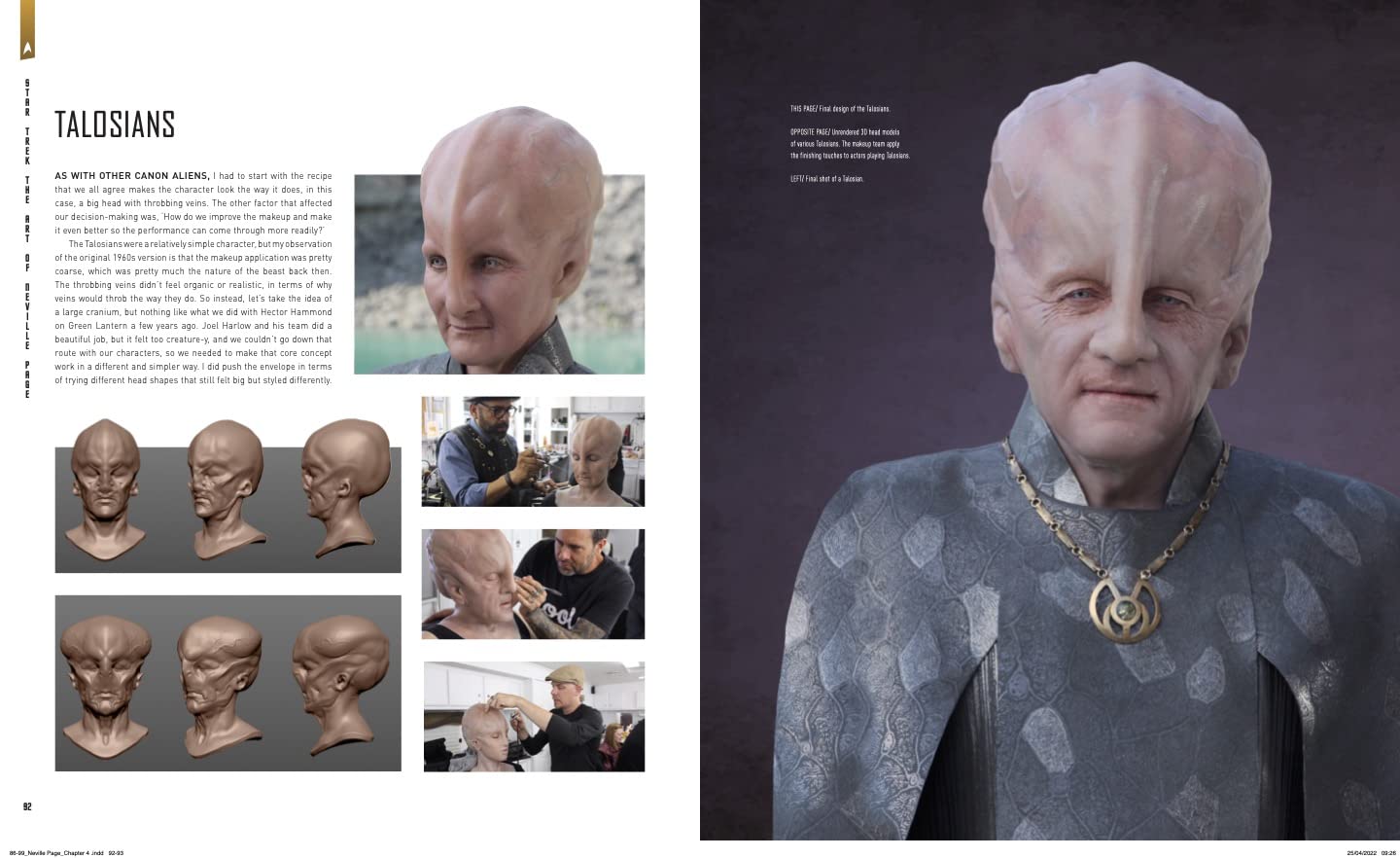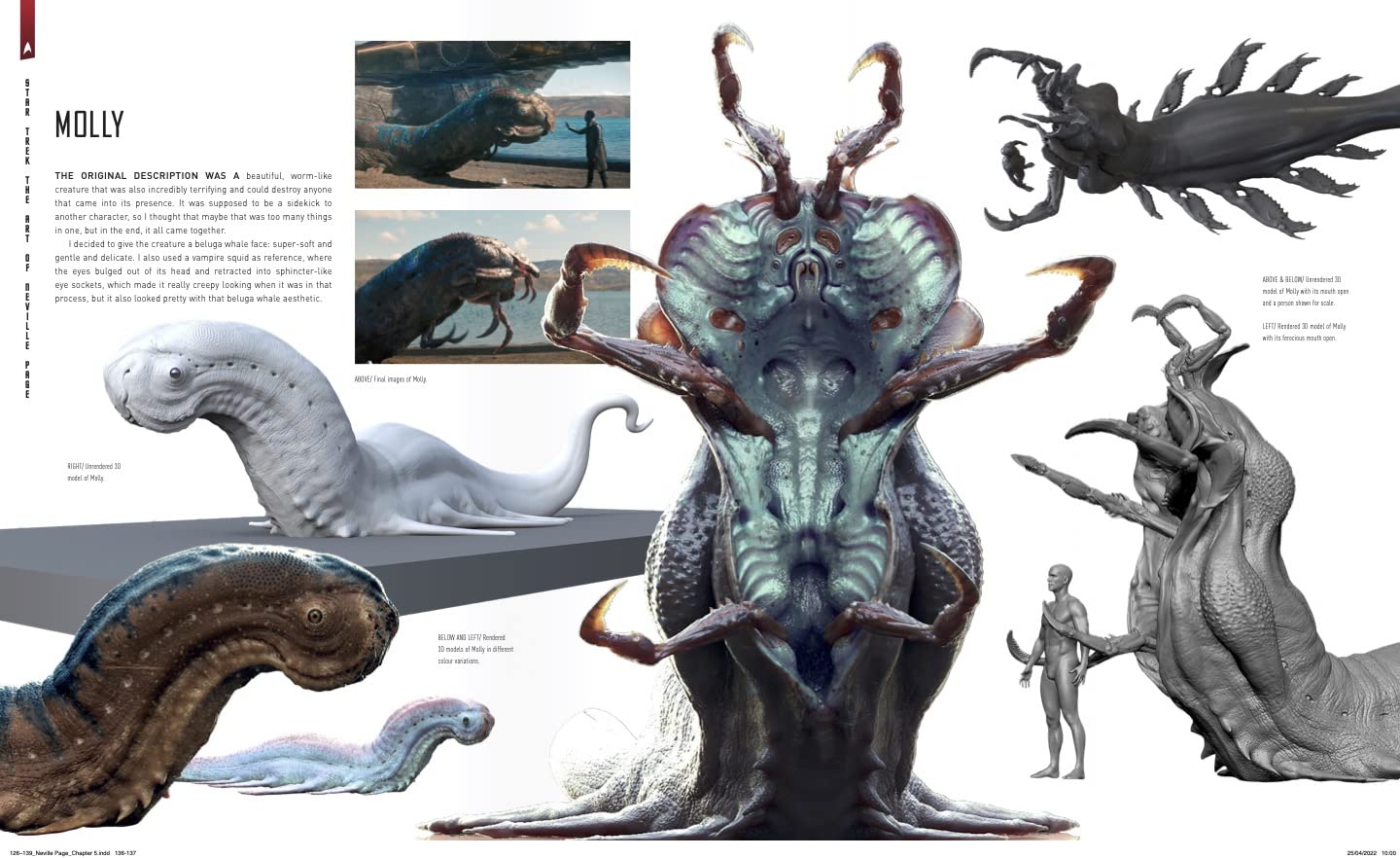'Star Trek' creature designer Neville Page on creating aliens and his new book (exclusive)

Sci-fi fans might not know his name, but they're undoubtedly familiar with his work.
Neville Page is a name synonymous with inspired creature design and original concepts for films like "Avatar," "Cloverfield," "Super 8," "Prometheus," and in "Star Trek's" cosmos collaborating with directors J.J. Abrams and Justin Lin on "Star Trek" (2009), "Star Trek Into Darkness" (2013), and "Star Trek Beyond" (2016), then onto TV gigs for "Star Trek: Discovery" and "Star Trek: Picard."
Having applied his talents for conceiving Hollywood monsters and aliens for more than two decades, and being seen as a judge on the SYFY TV series "Face Off," Page is an amiable and accessible personality who's always amped to encourage a neophyte or regale fans with revealing anecdotes from working with the film industry's most notable talents like Abrams, Ridley Scott and James Cameron.
"Star Trek: The Art of Neville Page" by author Joe Nazzaro is a new hardcover retrospective showcasing Page's "Trek"-centric work that was just released from Titan Books. This deluxe 192-page volume examines the artist's exacting process, fortified with detailed illustrations plus an exclusive foreword and afterword by award-winning filmmakers, Alex Kurtzman and Michael Westmore.
Related: Star Trek streaming guide: Where to watch the Star Trek movies and TV shows online
Star Trek: The Art of Neville Page: $39.95 at Amazon
Go inside the mind of legendary creature designer Neville Page in this gorgeous full-color hardback book from Titan Books.
Space.com spoke to Page regarding his distinctive contributions to "Star Trek," his earliest associations with creator Gene Roddenberry's brainchild, and how the franchise helped shape his life and career as this new book saluting his imaginative creations in the final frontier arrives.
"It's somewhat nostalgic," Page tells Space.com. "I was born in 1965 and having moved from England to Chicago when I was five years old, I was watching a lot of 'Star Trek.' I will never forget the episode, 'Devil in the Dark,' with this creature [The Horta] that looked like a rock and it would slowly crawl on top of people and flatten them and leave a big red potato-chip shape. That one really messed me up and I had recurring nightmares of that creature chasing.
Breaking space news, the latest updates on rocket launches, skywatching events and more!
"So there's nostalgia for me and it's really fun to be a part of my childhood and contributing to contemporary 'Star Trek' fans as well as new fans, and hopefully not traumatizing them. 'Star Wars' came out in ’77 as we all know and I wanted everything in my life to be 'Star Wars.'"
But fate would eventually step in to steer the rising superstar designer away from that galaxy far, far away and into a bold new job when he was given the opportunity to work on 2009's "Star Trek" reboot via director J.J. Abrams.
"It kind of fell into my lap," Page recalls. "We'd finished 'Cloverfield' and the next production for him was 'Star Trek' and he asked if I wanted to be a part of it. Experiences I had on 'Cloverfield' were so wonderful and the opportunity to continue working with J.J. was very exciting to me.
"I'd finished 'Avatar' with James Cameron but that was all under a roof drawing pictures at the Howard Hughes stage where the first motion-capture stages were set up. It doesn't feel like a movie set because it's people in mo-cap suits and grey boxes and wire frame shapes of things. Being on J.J.'s 'Star Trek' where it was massive sets was such a thrill. I made it a point of going on every set wherever he was and be available for him. The immersion of that production changed my interest in film a great deal. I started off designing one thing for J.J., then it rolled into doing background aliens and Romulans and other creatures and characters.
"Then there was the next 'Star Trek' feature and then one after that, and then 'Star Trek: Discovery' and working with Alex Kurtzman. 'Star Trek' became a huge part of my life and it was important that I really understand the world of the franchise that I'm in. As my responsibilities grew, so did my investment of time to learn about production, the fans, and the canon. The fans are vocal and loud in a good way, and you're learning about their demands."
Legendary artist H.R. Giger and Academy Award-winning makeup genius Rick Baker were two powerful influences on Page's impressive career so far, and there seems to be an organic integration of their spirit in everything he focuses his imagination on.
"Rick Baker was an inspiration before I even knew I wanted to do what I'm doing," says Page. "I stumbled upon a Fangoria book at a Chicago garage sale. In it was an image of Rick Baker with one of his sculptures and I think it was Mr. Hyde. When I saw that picture of the clay sculpture it had a profound impact on me in that I had no idea a human being could do something like that.
"My influences to be a makeup artist was very early, but as a kid from Chicago, where does one go to do it? Years later working on aliens and having met Rick, the relationship is very different, but I'm still a fanboy who remember this incredible stuff he was doing. His influence through me on 'Star Trek' is that I’ve watched and paid attention to his work for many years. Anytime you observe another artist doing their craft, if you love them that much, it's going to seep in."
That brings us to Page inadvertently channeling the ghost of H.R. Giger on "Star Trek: Discovery" Season 1 where the production required a particular Klingon armored torchbearer spacesuit, even if it was only seen on screen for less than a minute.
"I did it with no intention of having Giger's work influence the design," he recalls. "I wonder if it's just my admiration of his work on 'Alien' and the whole biomechanics thing. It was interesting to me when people would see the design and say 'That's very Giger.' But the influence was actually an ammonite fossil. It had a bronze material finish and it's an organic repeating pattern. If you look at Giger's work, that's something he's done a ton of. The Klingon thing started with a Klingon skull. I had ridges that worked their way down the back of the head and into the spine.
"Having worked on 'Prometheus' where my job was to play in Giger's sandbox, I'm pretty familiar with designing a Giger aesthetic versus what I was doing that had Giger 'elements' in it. I was really proud of that Klingon torchbearer spacesuit. It became very personal because there was no time to police what I was doing and it meant that I was allowed to apply 'Star Trek' research and give it a twist, which is what your design job is. Every inch of that suit was thought out, not just in terms of function, but the iconography and metaphor and the narrative behind it."
"Star Trek: The Art of Neville Page" is available now at bookstores and online outlets.

Jeff Spry is an award-winning screenwriter and veteran freelance journalist covering TV, movies, video games, books, and comics. His work has appeared at SYFY Wire, Inverse, Collider, Bleeding Cool and elsewhere. Jeff lives in beautiful Bend, Oregon amid the ponderosa pines, classic muscle cars, a crypt of collector horror comics, and two loyal English Setters.






